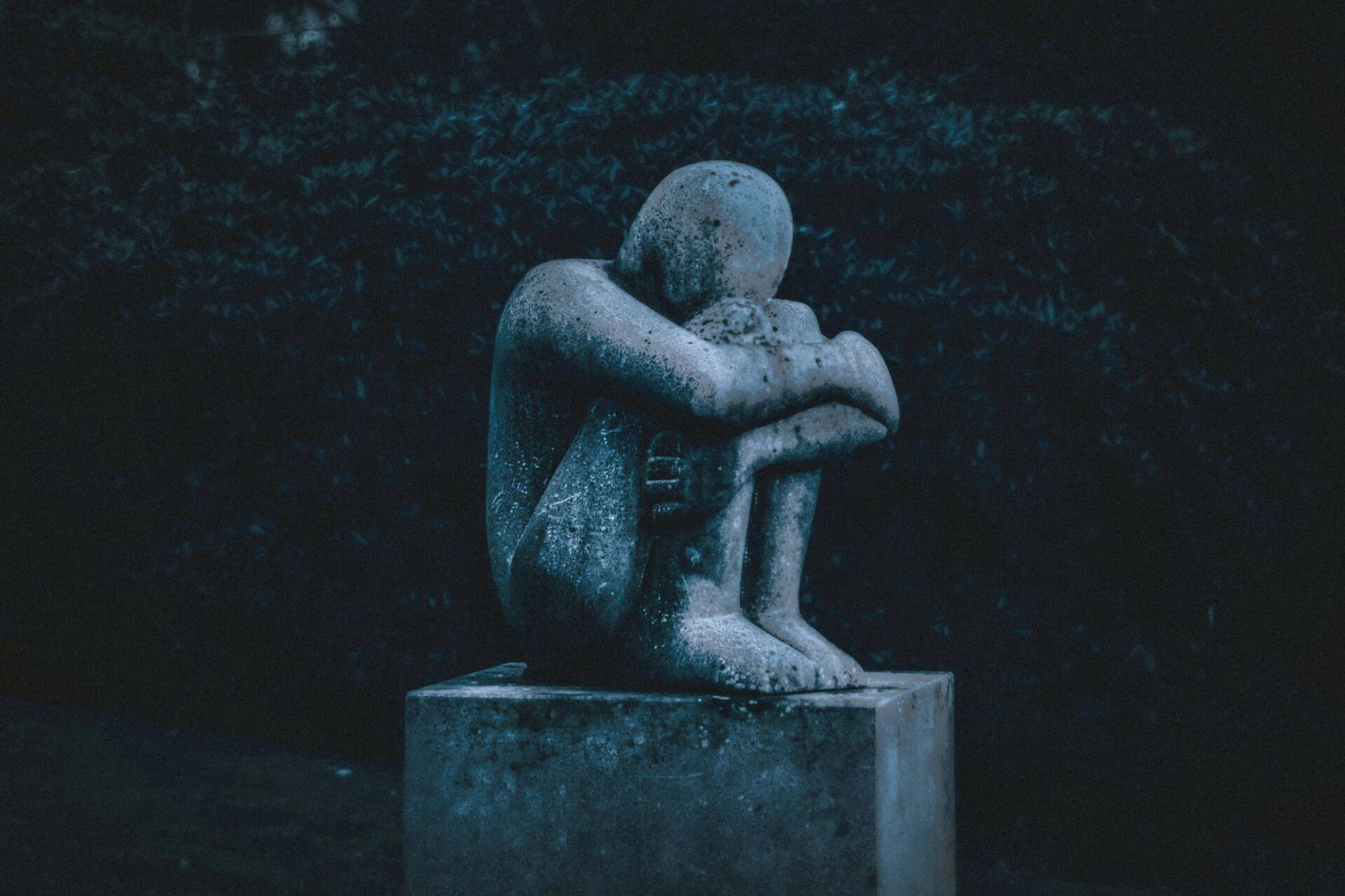


Written by Emily Cross.
17 minute read
Article reviewed by Judy Carole, Published Author on May 2, 2025.
When someone you love dies it is understandable to feel overwhelmed by a complex range of emotions. Knowing how to deal with grief may help as it can give you a framework that you can then adapt to your personal situation. Even so, it’s important to be kind and understanding with yourself because how you grieve will be unique, and will shape what you do when someone you love dies.
For some, knowing what to do when someone dies begins with practical steps to settle affairs. For others, grief takes over before anything can be done. You might need to sit with your emotions and reflect for a while — that’s perfectly natural. It’s all part of processing what’s happened.
You will move through grief at your own pace, which might not match others around you, and that’s okay. The commonly known five stages of grief — denial, anger, bargaining, depression, and acceptance — can be a helpful way to understand your feelings. You may not go through them in a straight line, and you might revisit stages more than once. Grief doesn’t follow rules, but having a model to refer to can provide something steady if emotions feel overwhelming.
As a family-run funeral provider, we care about providing support on both a practical and an emotional level. We understand that grief is a deeply personal process and we hope this article offers you some comfort and guidance along the way.
Key takeaways:

Grief is more than just sadness or missing someone. It’s a multi-layered process that ebbs and flows and may take months or even years to work through. Having a model to refer back to can help you understand your experience.
The Kübler-Ross model originates from the field of bereavement psychology where it was originally formulated to outline the emotional journey experienced by terminally ill patients. Over time it has come to be widely adopted by those processing all manner of different types of loss, not just those faced with their own death. It’s important to note that because it is a model, rather than a definitive theory, it cannot account for the fact that experiences will differ from one person to the next.
No two people will cope with losing a parent, the suicide of a loved one, or the unexpected death of a loved one in exactly the same way, and there is nothing wrong with this. One person may follow each stage in a textbook progression, while someone else may skip a stage and then repeat another multiple times. Both experiences are equally valid and neither means that the model is either exactly right or completely wrong.
The model’s purpose is to show that grief involves different stages…emotional, cognitive, and behavioural. Being aware of this may help you be kinder to yourself. Each stage is a way of coping and moving towards healing.
Denial is when you attempt to tell yourself that nothing has happened and that everything is as it was before your loved one died. It is often the first stage of the grieving process.
The protective shield
Denial is a natural reaction to overwhelming loss or trauma and acts as a form of emotional shield that prevents you from having to immediately face the fact that someone has died. By creating distance between reality and your emotions, denial gives you time to gradually come to terms with what can be a very sudden change.
A common sign of denial would be if you were to continue with your regular routine of going to work, coming home, and laying the table for both of you even though your partner has died. It can act as a buffer between shock and reality, and give you time to adjust, at your own pace.
Anger is a natural coping mechanism that often comes to the surface when you feel you need to blame someone for the death. It is an attempt to rationalise something that may feel cruel and arbitrary.
The search for blame
Anger often masks the pain and vulnerability that are percolating under the surface. Being angry at hospital staff, GPs, or even other loved ones you feel have not shouldered the same pressure is natural.
You should not feel guilty or ashamed for being angry because it is a natural and healthy way to start releasing pent-up emotions. Over time, anger will subside and you will find that you can develop new coping mechanisms.
Bargaining is a natural attempt to try and replay events and change the outcome. Many of us find solace in the belief we could have done things differently and that events were not entirely out of our hands.
The “what if” phase
A period of mental negotiation often occurs in response to grief, and it’s an attempt to see how you could change the outcome. Even though you cannot change the fact someone you love has died, giving some thought to how you would may provide you with a sense of comfort and clarity.
To many, bargaining is about making a concerted effort to regain a sense of control or hope about a situation that is hard to process emotionally. Finding alternative ‘solutions’ can also open your mind to other points of view and could also provide you with new ways of thinking about your situation.
Depression is often thought of as the point at which reality fully kicks in. While we by no means want to paint any of the previous stages as anything like delusion, depression can be when many people describe how they feel as becoming ‘real’ and permanent.
The weight of reality
This stage typically reflects the full emotional impact of loss and it can feel more overwhelming than anything you have been through so far. Some may find this disheartening because it’s easy to think that you ‘should’ feel better with each passing day. In truth, grief is typically a much more complex process.
Depression during the grieving process is different from clinical depression in that it may feel completely absent during certain parts of the day, only to return in full force without warning. Clinical depression tends to be more constant and predictable throughout the course of the day.
If you find that feelings of depression are becoming all-consuming, you may wish to consider contacting your GP. They can then refer you to specialist help in your local area so that you can continue on your healing journey.
Accepting that someone has died isn’t about forgetting them. Acceptance is when you come to terms with death and develop a clear vision for the form you want your life to take from now on.
Finding a way forward
Acceptance means learning to live with the loss, not forgetting it, and certainly not forgetting the person who has died. People experiencing acceptance will typically be calmer and more reflective than those working through some of the earlier stages of the grieving process.
Arriving at a stage of acceptance is about coming to terms with the death you have been processing and figuring out what happens next. Something as simple as trying out a new routine, hobby, or evening activity may help you continue to move forward and develop other healthy habits. This part of your life is about self-care, reflection, and achieving a sense of balance.
Anyone who is remembering a loved one may find that they ‘regress’ if they attempt to stick rigidly to the model. In this context, ‘regression’ doesn’t mean a backward step, rather, it means that grief is non-linear in many cases. Going back a step to then move forward is a sign that you are healing and continuing on your own personal journey. Many experience regression when something triggers them, such as the first birthday after the death of a loved one, or a holiday commonly shared with family, and this is completely normal.
Repeating and skipping particular stages is something that many people report and is not a sign that you are somehow not coping or not healing emotionally. The nature and timeframe of the grieving process are completely unique to you. If you find that someone else appears to be coming to terms with a death and functioning far quicker again, while this may be disheartening, it is by no means a sign of failure. You will get there in your own time.
Even though it may not feel like it right now, there are ways to cope with grief and places you can go for emotional support at this difficult time.
While we never want to prescribe what you should do, you may find it helpful to consider a few of the following options:
If you are one of the first to find out about the death of someone you love, you may find that choosing to tell others can help you process how you feel. Our guide on how to break bad news may help you find the right timing and choice of words in this case.
Grieving is natural, but sometimes, the pain doesn’t soften with time. In some cases, it can become something called complicated grief — also known as prolonged grief disorder. This is when intense and persistent feelings of loss continue for over a year, deeply affecting daily life. It can feel impossible to accept what’s happened or to find a way back to living normally.
If you’re finding that your grief feels overwhelming or never-ending, you’re not alone, and you don’t have to face it without help. Professional support can offer comfort, understanding, and the right tools to help you heal at your own pace.
Seeking help is a sign of strength and self-compassion, not weakness, and you may find that your local GP is the first port of call. They will be able to redirect you to counselling services and therapists active in your local community.
Loss isn’t always about death, although we fully accept that the loss of life can feel like the greatest loss of all. If you have come to miss something in your life, but not through the death of a loved one, you may find the following section helpful.
Divorce, loss of employment, terminal illness, or major life changes like being forced to move or relocate can all trigger a sense of loss. Some will be greater and more acute than others, but they all remain equally valid. The interesting thing is that, for many of us, each of these sources of grief will follow a similar model as the one relating to death this article has focused on. With this in mind, you may find that the model serves as a useful point of reference when you want to create your own coping strategies.
Some people also find symbols of grief meaningful — objects or gestures that help express and process loss. This could be something you find comfort in as you adapt to a new chapter.
We are a family-run service that cares about reaching out and helping in any way we can. Our goal is always to listen with compassion and serve you with kindness, and hopefully, to make a difference in the way you grieve, process loss, and continue with life. There are a variety of different ways we can help.
We can offer a range of flexible direct cremation services that allow you to mark the death of a loved one in a way that feels right to you. If you are considering how to settle your own affairs while you are still alive, we can also assist with a range of prepaid funeral plans that may go some way to relieve the pressure on those left behind.
No matter how you choose to use our services, or what you choose to do with our many online resources, we are always right here when you need us. Death and the grief that follows is a deeply personal journey that you will work through in your own way and at your pace, and we completely understand that.



Elisabeth Kübler-Ross created a 5-stage model that includes denial, anger, bargaining, depression, and acceptance. While some contend that the model is not scientifically proven, it may prove to be a useful tool for those looking to understand how they are feeling at a given moment in time.
Having a model to refer back to that is based on observations of lived experiences could help you anchor yourself to a process. Others may find that it provides a sense of clarity, perhaps even closure, because it shows that grief may not last forever in its current form. Having some awareness that the way you feel now will change as you move forward could help you carry the emotional weight a death in the family can create.
One of the potential issues with referencing a model for grief is that it may create unrealistic expectations. Different resources that discuss the model may attribute different timescales to the various stages, for example, some will say that depression typically lasts much longer than denial. While statements like this may be true for many people, they will be at odds with the experiences of others. For this reason, we prefer not to offer typical time frames for each of the five stages.
Instead of focusing on timeframes, you may wish to consider that grief itself is not a linear process that takes you from one stage to the next. You may find you occupy multiple stages at the same time, or you may find that you move backward to a previous stage. This is not a sign of failure, but simply a demonstration of the fact that grief is a highly complex, personal process. Using the model as a reference and a starting point, but not a rigid set of expectations, may allow you to strike the right balance.
Yes, many people find that they skip particular stages of grief, while others find they repeat certain stages several times. Neither is right or wrong because grief itself is so complex and personal that it is simply not possible to create a universal model that applies in every single case.
There is no right or wrong way to cope with grief, only different ways. Some people find focusing on their physical health and well-being with exercise and diet helps. Others may prefer to have time alone to reflect or to talk to someone close to them who knew the person who has died. There are also many combinations of these different coping mechanisms, and they can also change over time. Being kind to yourself and remembering that you have the right to cope with grief however you wish may also help you maintain perspective.
Not always, although starting with the model outlined in this guide may provide you with insights into how you feel. Some people skip a stage, others repeat a stage. Using the model to increase your awareness of how you may feel in the near future is helpful, but sticking to it rigidly and then being unkind to yourself when you deviate from it may not be. Grief is a personal journey that you have to experience and work through at your own pace and in your own way.
Yes, many people report repeating certain stages of grief, some multiple times. Be kind and understanding to yourself, and try to avoid direct comparisons with those around you, and you will be able to find your own path through grief so that you can continue with life.
Different people will require different things, but there are some general principles that you may find helpful to consider. In the majority of cases, the person you are helping will not want you to try and ‘fix’ or ‘solve’ their grief for them — it is something they have to work through and it is as real as the fact that someone they love has died.
Common ways that you can help include validating their feelings, being present and attentive, listening to what they say, and creating a safe space where they can talk and be themselves. Depending on your relationship with the person who is grieving, they may wish to use their time with you as a distraction from the grieving process. This is perfectly natural and something that can go a long way to helping them lift their emotional energy at a difficult time.
It’s a model, not a definitive theory or a rigid timeline that everyone follows. Lived experiences differ from one person to the next, but the idea of a model may help many reading this guide to gain clarity about what they are feeling and experiencing. Some choose to dismiss the model, others find it helpful to study it in more detail. The right approach is whatever feels like it is helping you at any given moment in time.
staging site last replicated: MISSINGNO.